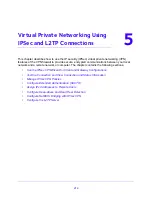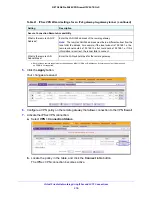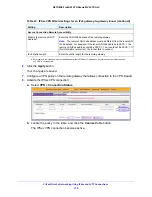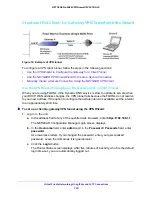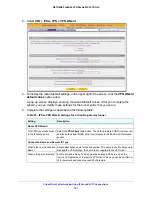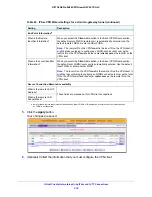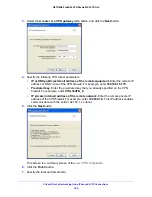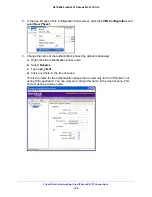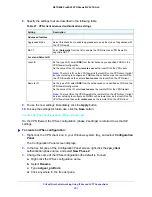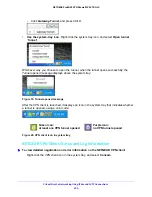
Virtual Private Networking Using IPSec and L2TP Connections
222
NETGEAR ProSAFE VPN Firewall FVS318G v2
5.
Click the
Apply
button.
Your changes are saved.
6.
(Optional) Collect the information that you must configure the VPN client.
End Point Information
a
What is the Remote
Identifier Information?
When you select the
Client
radio button in the About VPN Wizard section,
the default remote FQDN (remote.com) is automatically entered. Use the
default remote FQDN, or enter another FQDN.
Note:
The remote ID on the VPN firewall is the local ID on the VPN client. It
might be less confusing to configure an FQDN such as client.com as the
remote ID on the VPN firewall and then enter
client.com
as the local ID on the
VPN client.
What is the Local Identifier
Information?
When you select the
Client
radio button in the About VPN Wizard section,
the default local FQDN (local.com) is automatically entered. Use the default
local FQDN, or enter another FQDN.
Note:
The local ID on the VPN firewall is the remote ID on the VPN client. It
might be less confusing to configure an FQDN such as router.com as the local
ID on the VPN firewall and then enter
router.com
as the remote ID on the
VPN client.
Secure Connection Remote Accessibility
What is the remote LAN IP
Address?
These fields are masked out for VPN client connections.
What is the remote LAN
Subnet Mask?
a. Both local and remote endpoints must be defined as either FQDNs or IP addresses. A combination of an IP address and
an FQDN is not supported.
Table 43. IPSec VPN Wizard settings for a client-to-gateway tunnel (continued)
Setting
Description





